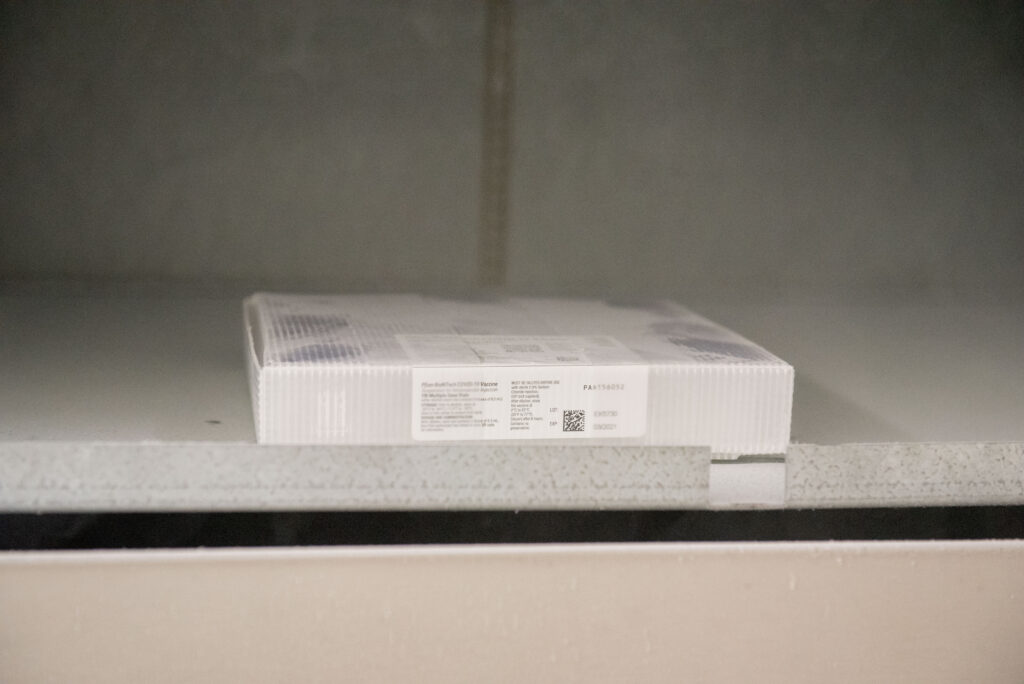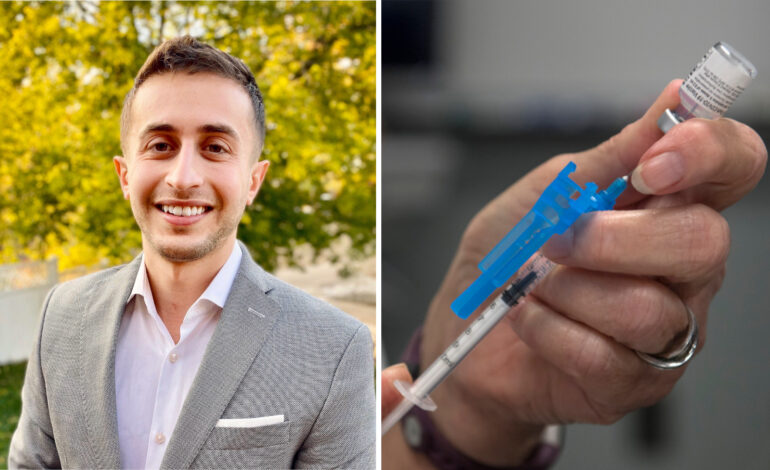DEARBORN — The state of Michigan began immunizations against the COVID-19 virus on Monday, as quantities of the new Pfizer vaccine began reaching sites across the country this week.
By Wednesday night, 1,078 vaccines had been administered to Michigan’s health care workers who are at high risk of contraction due to their routine exposure to patients, according to a new COVID-19 vaccine dashboard managed by Michigan’s government.
With almost 85,000 vaccines distributed to Michigan and more expected along the way, the reality is beginning to set in on the mass immunization program against a virus that has killed more than 11,000 people in the state.
One of the hotbeds of the virus in Wayne County is undoubtedly Dearborn. Yet yet many are hesitant about the vaccine, which is shown to be enormously effective.
Misinformation and myth about the COVID vaccine, and the virus itself, is rampant in the Arab American community. To be sure, the community is not alone in dangerous beliefs about the virus, which are reflective of anti-scientific rhetoric in the broader population.
To get some clarity and insight on the new vaccines, The Arab American News reached out to a public health expert, and Dearborn native, about why people should be encouraged to get immunized and embrace this glimmer of hope during a dire global health emergency.
Ali Abazeed serves as public health advisor at the National Institutes of Health (NIH). Prior to joining the federal government, he served as an advisor at the Detroit Health Department. Abazeed is a three-time graduate of the University of Michigan, holding bachelor’s of science, master’s of public health and master’s of public policy degrees.

Pfizer’s COVID-19 vaccine sits in cold storage at a Henry Ford Hospital in Michigan
What are some of the biggest myths about COVID-19 vaccines you have noticed among Arab Americans? What should the community know about the safety and efficacy of the FDA approved vaccine (and possible future vaccines) to help it be less apprehensive about immunization?
Vaccine misinformation and hesitancy is a national concern, particularly in communities of color, for which the Arab American community is not immune. A study released this week shows the coronavirus vaccines face a trust gap in Black and Latino communities, which underscores the necessity of getting reliable information out to our people.
The single greatest concern I hear among all groups relates to the so-called “speed” at which the vaccines were developed. People mistakenly believe this has been developed in a few months, but that is not right. The better way to describe this is the development is based on years of research and the coronavirus is what enabled scientists to collaborate to take it to the finish line. Both the Pfizer-BioNTech and Moderna vaccine went through the normal and very rigorous three-phase trial system which enrolled close to 75,000 trial participants. No safety corners were cut. As Dr. Fauci has said, the development of the vaccines in record time is a reflection of the “extraordinary scientific advances in these types of vaccines, which allowed us to do things in months that actually took years before.”
The United States FDA — which remains the international gold standard in ensuring the safety, efficacy and security of vaccines—confirmed that both the Pfizer-BioNTech and Moderna vaccines appear safe and highly effective in preventing disease. Both vaccines have shown similar efficacy levels of near 95 percent. That is an astonishing level of protection.
Vaccine misinformation and hesitancy is a national concern, particularly in communities of color, for which the Arab American community is not immune
I have heard concerns about side effects and long-term complications from the vaccine. Here, it is important to note that the most serious adverse events in vaccine trials typically appear in hours and days, sometimes in weeks, and most within the first two months following injection. All of the nearly 75,000 participants in the Pfizer-BioNTech and Moderna trials were followed for a minimum of two months and the studies concluded that the vaccines are safe. Regarding side effects, it is more accurate to call them short-term mild or moderate vaccine reactions that resolve without complication. These reactions include short-lived symptoms at the site of injection, headaches, chills and fatigue that typically last a day or two. These reactions indicate that the immune system is responding to the vaccine and is not a cause for concern.
I understand people are anxious about the vaccine, but I really want to settle the concerns people have. These vaccines are safe. These vaccines will see us through to the end of the pandemic. These vaccines will allow us to regain our lives. And it is vitally important that the Arab American community not be left behind when it comes to reaping the benefits. Remember, we need to get 70 percent of our community vaccinated in order to establish herd immunity, or the point at which most of the population is immune to COVID-19, offering an indirect protection to everyone else.

Yvette Kamana, an intensive care nurse, was one of the first people to get vaccinated against COVID-19 in Michigan
Lastly, it is important to remember that though vaccines are being deployed and injections have begun across the country, we are in for a grim couple of months. We continue to break case, hospitalization and mortality records a few times a week nationally. Though the vaccines herald the beginning of the end of the pandemic, we must continue to stay vigilant for the next several months to make sure we and our loved ones are around for the light at the end of the tunnel.
The single greatest concern I hear among all groups relates to the so-called “speed” at which the vaccines were developed. People mistakenly believe this has been developed in a few months, but that is not right
Dearborn continues to be one of the centers of the virus in Wayne County, with many people dismissing COVID-19 as “the flu.” What should such people know about the main differences between this disease and other respiratory infections that has driven health care professionals and scientists to deem COVID-19 a global health emergency?
Despite the persistent refrain from skeptics, COVID-19 is not the flu. Since both are respiratory infections, it is true that symptoms alone make it difficult to distinguish between the two, but COVID-19 is far more dangerous. Since December 2019, COVID-19 has killed more people in the U.S. than the seasonal flu has in the last five years.
Since COVID-19 is a novel virus — meaning that it is a new strain of a virus that has not been previously identified in humans prior to December 2019 — our bodies do not have immune defenses prepared to tackle it. This lack of immunity is the single most important feature of COVID-19 and means that virtually everyone is susceptible to infection. With colds and the seasonal flu, our bodies have likely encountered these viruses before, so our immune systems have developed antibodies to protect us in case we come across the viruses again. We also have good treatments for seasonal flu and we are still developing robust treatments for COVID-19.
FYI – this is what the COVID-19 vaccine does: It teaches our immune system how to recognize the COVID-19 virus without being infected so that if the body encounters it, antibodies are deployed to fight it.
COVID-19 vaccine teaches our immune system how to recognize the COVID-19 virus without being infected so that if the body encounters it, antibodies are deployed to fight it
COVID-19 has a higher severe disease and mortality rate than seasonal flu in all age groups, except perhaps children under the age of 12.
Another serious concern and another area where COVID-19 differs from seasonal flu is the question of long-term health effects. COVID-19 survivors report many more long-term effects of the infection than seasonal flu survivors. Symptoms include muscle fatigue, brain fog, shortness of breath, difficulty focusing and in some more rare cases, heart and neurological symptoms.
With all infectious diseases, the primary objective of public health includes treating infected people and limiting the spread of the infection. We have reason to believe that COVID-19 is more infectious than the flu and individuals with mild or no symptoms can still spread the virus to others, some of whom could have a much more serious course of disease.
There are many claims circulating on social media, but one worth noting is that the COVID-19 mortality rate is 1 percent–2 percent and that people should not be vaccinated against a virus with a high survival rate. However, a 1 percent mortality rate is 10 times more lethal than the seasonal flu. In addition, the mortality rate can vary widely based on age, sex and underlying health conditions.






Leave a Reply